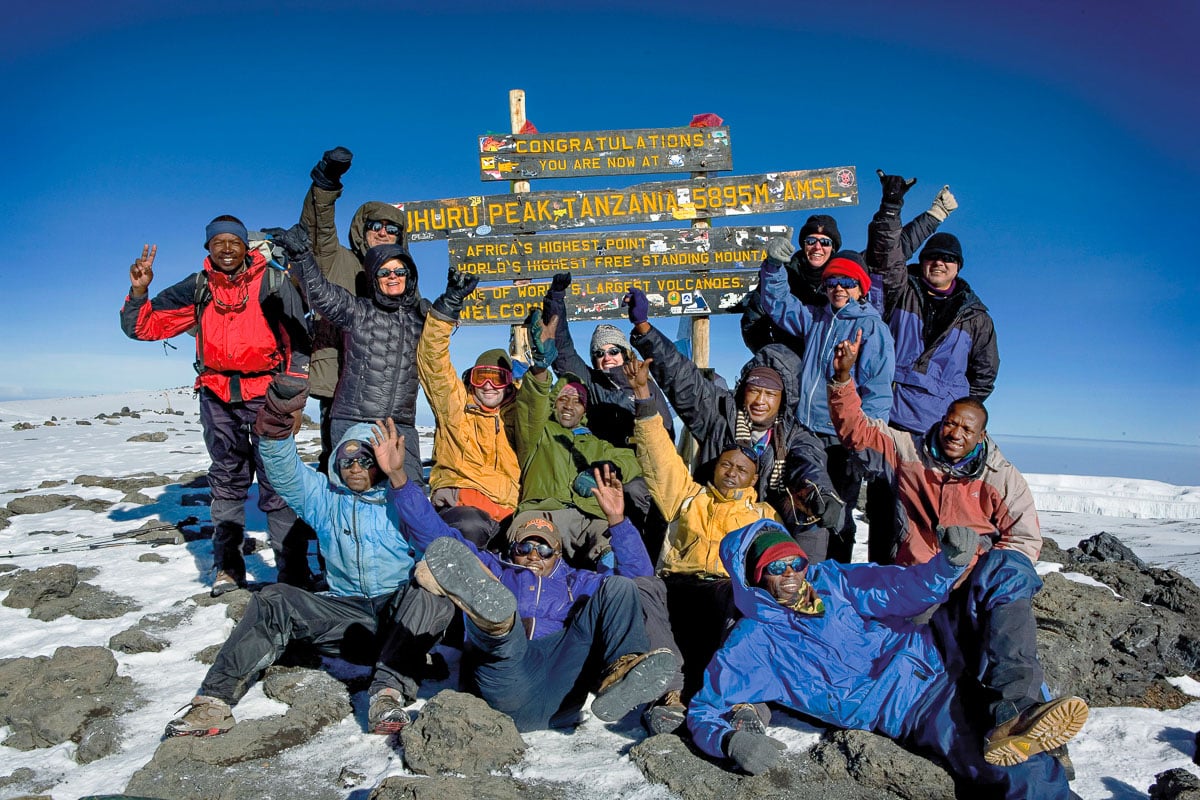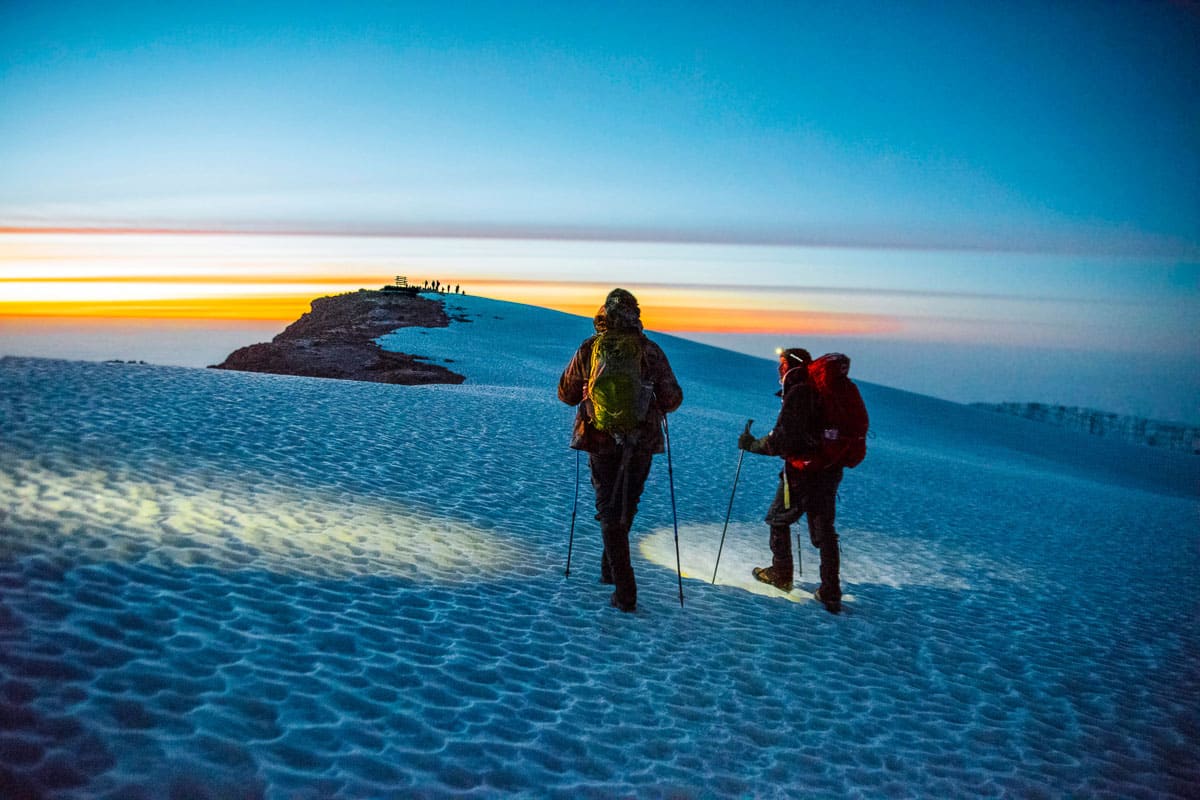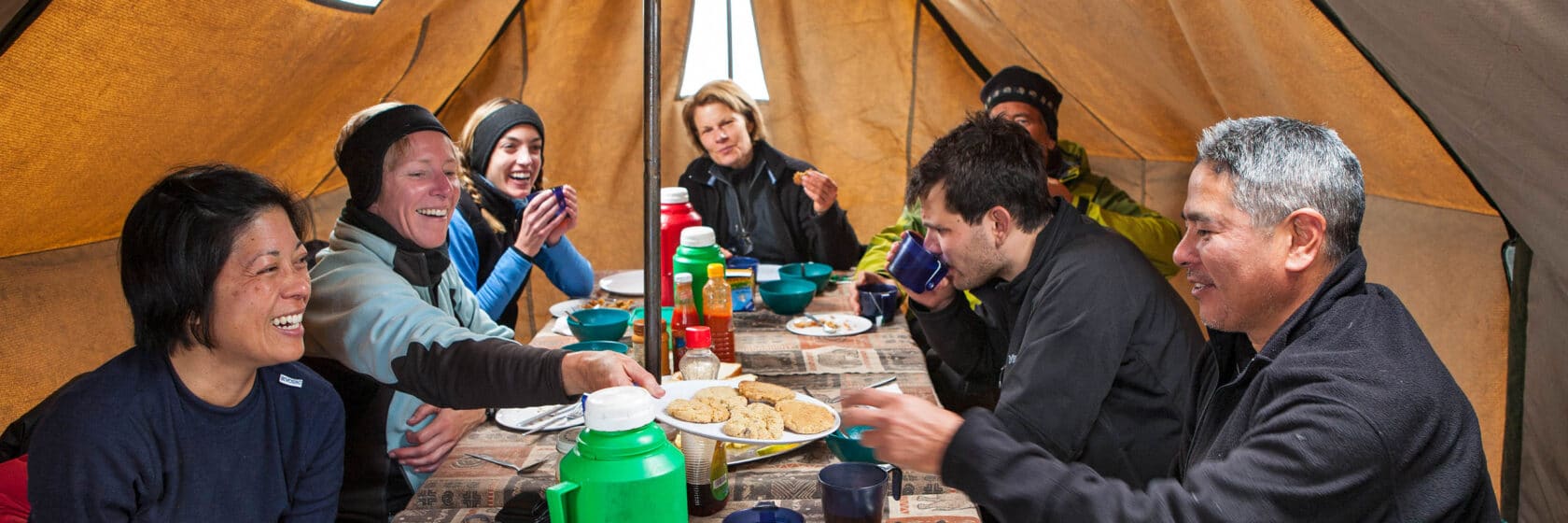
Kilimanjaro
Nutritious Food Climbing Kilimanjaro
You’ll be climbing the highest peak in Africa—the food that fuels you is an essential ingredient in your summit success. What is important for your meals on the climb? First, that the food is nutritious. Meals should be high in calories with the proper balance of complex carbohydrates, protein, and the right kind of fats to help sustain your increased level of exertion. We’ve designed our menus to include the right nutrition to keep you going on the climb, with three good meals a day, plus tasty trail snacks—the simple sugars in these are helpful in providing a boost of energy to keep you going.
The second, and equally important, consideration is that the food should be delicious so that you will eat it! To keep your body working efficiently, your food intake needs to match the amount of energy you’ve exerted. However, as altitude increases, your appetite typically decreases. Food that tastes good and that you enjoy eating is an indispensable asset in keeping you fueled throughout the climb.
Our Kili climbs have become renowned for the excellent meals served on the mountain, even at the highest altitudes. We have put a great deal of effort into combining proper nutrition with appealing and varied dishes; WT even launched the first chef training school in Tanzania over twenty years ago to create the highest standard of food quality for our high altitude climbs
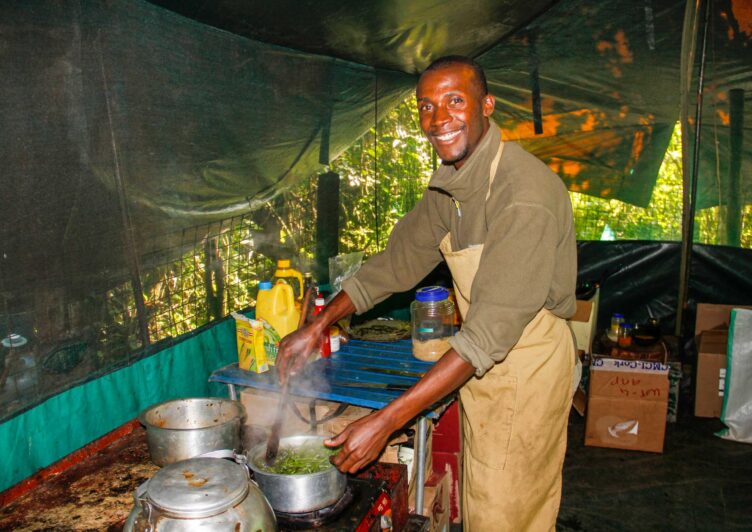
Annual Chef Training
Wilderness Travel chefs undergo an intensive training program, beginning as kitchen helpers and, over years of training as assistant chefs, may be promoted to head chef. All chefs receive annual training in hygienic food preparation and are tested on their practices by trained supervisors. We recently invited an international chef to give additional training in new recipes and presentation, in order to keep our menu update, varied, and appetizing. Our nutritious and delicious recipes are sampled by our local office in Arusha before they receive the seal of approval and are served to you during your trip.
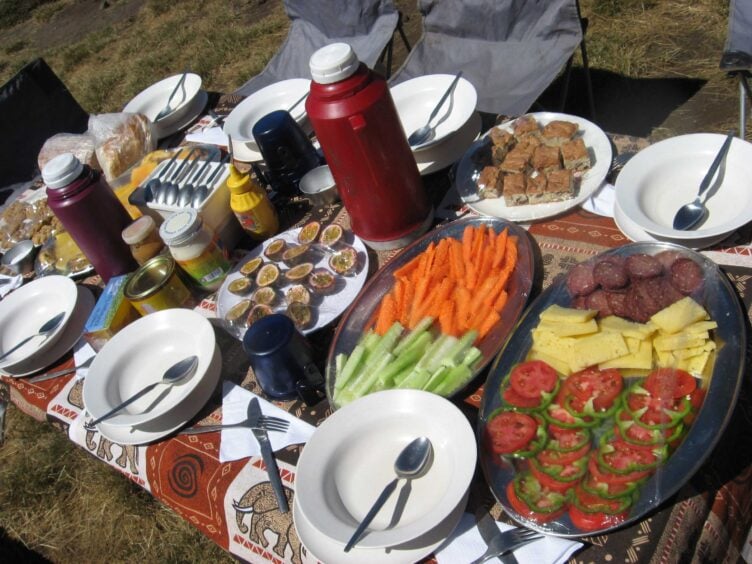
We Buy Local
We are always honored to partner with small-scale farmers in the communities surrounding Kilimanjaro who provide some of the tastiest ingredients in the region. The fruit you’ll savor during your trip (think pineapple, watermelon, banana, papaya, mango, and oranges) come from local farms nearby, and our mozzarella comes from Lucus, who lives in Sanya Juu on the lower slopes of Kilimanjaro, and learned how to make this cheese when he was young.

Food Safety
Fresh produce is washed in an all-purpose sterilizer used for fresh food products as this is the best and most effective way to ensure that bacteria is removed for safe consumption. As a result, we are able to safely serve salad and uncooked vegetables on the mountain for a refreshing boost of fiber and nutrients.
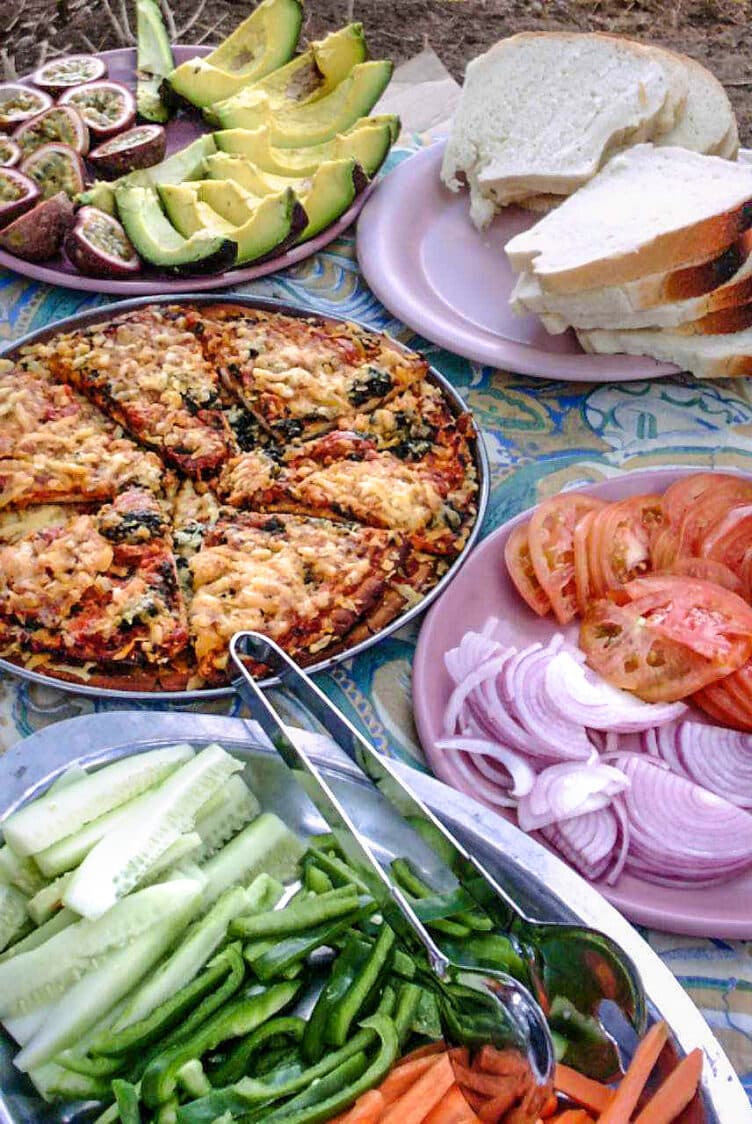
Sample Menus
We have a separate dining tent with food available upon request at any time. Following are some sample menu items offered during meals while on the Kilimanjaro climb:
Tea/coffee, sliced fruit, scrambled eggs, bacon, porridge, homemade granola, toast, honey, and jam.
A trail mix of roasted cashews, peanuts, chocolate, and raisins. We also offer sugary sweets, which add much needed energy boosts at higher altitudes. We dry our own fruit (pineapple, mango, and banana), which is a perfect light-weight nutritional and sweet trail snack. Our homemade granola and sun-dried tomatoes are also real favorites.
This is set up along the trail midway through the day’s hike. Tea, coffee, hot chocolate, sandwiches, soup, guacamole, peppers, tomatoes, almond date bars, nuts, fruit, sun dried tomatoes, and cheese.
Tomato ginger soup with baked bread, fresh tilapia with chips, peas with butter and mint, avocado tomato salad, apple pie and cream. At higher altitudes, we eat more starch based food that is easier to digest, including pasta with garlic bread, spaghetti bolognese, cauliflower, carrots, brownies, and fruit cake. After the climb, we enjoy a sumptuous celebratory meal brought in fresh from our Arusha headquarters (think warm chocolate cake)!
Dietary Requests
We easily cater to most dietary requests including vegetarians, vegans, gluten-free, lactose-free, and food allergies—just let us know ahead of time and we will create special meals just for you.
Gluten-Free
We have tested all available wheat-flour-alternatives to find which works best in different baked items. For example, we found that a pizza base made from cassava flour works best, but cookies are better baked with rice flour. Our chefs make all of the baked goods we provide, ensuring the highest quality control. Upon request, we can provide gluten free bread, cookies, pancakes, and cakes.
Lactose-Free
We can offer nourishing alternatives to milk products, such as fresh vegetables when cheese is served and a water-based broth for soups that usually contain milk.
Vegetarians
We provide fresh fruit and vegetables on the mountain and our chefs offer a variety of delicious vegetarian recipes.
What Other Guys Do
Many of the budget trekking companies offer a limited selection of food and purified water, most cannot accommodate dietary requests or restrictions.
A sample menu from another company includes eggs (boiled or fried), porridge, sausage, a piece of fruit such as a banana or orange, and white bread with jam for breakfast. Each climber must carry their own lunch in a small bag. Normally, it includes a boiled egg, a sandwich on white bread, and a banana. Dinners begin with packaged soup, meat with a vegetable sauce, cabbage, and rice.
Companies claim that due to regulations, they cannot serve hot food for lunch. We transport our soup in thermoses, pre-cut and prepare vegetable and fruit plates, sandwich makings, and desert so it is ready (on a table) for trip members when they arrive.
Safe Drinking Water
It is very important to stay hydrated throughout the Kilimanjaro climb. You should be drinking nearly a gallon of water each day. This may seem like a lot, but the lower oxygen levels make you breathe in and out faster and more deeply, so you lose a lot of water through respiration. The low humidity at high altitude will also tend to dehydrate you. Many climbers don’t realize how much water they are losing due to exertion, since sweat tends to dissipate quickly. Finally, high altitude can make you feel the need to urinate more often, putting you at even greater risk of dehydration. All of these factors, as well as the impact of altitude suppressing your thirst response, can add up to serious dehydration. Our Trip Leaders will be encouraging you to drink water throughout the climb.
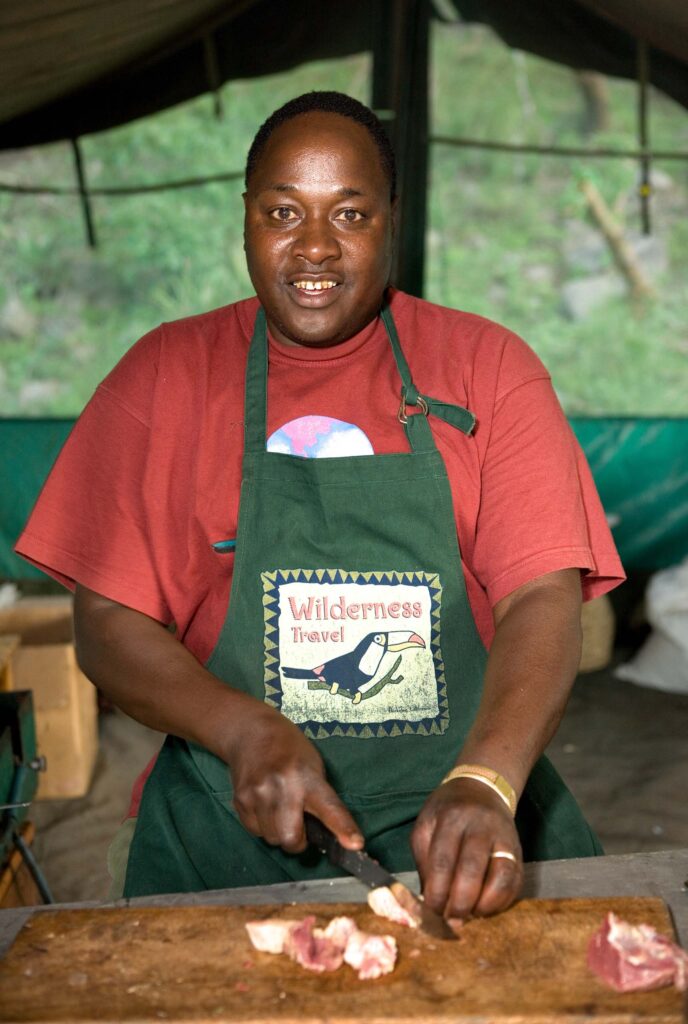
Safe Drinking Water
It is very important to stay hydrated throughout the Kilimanjaro climb. You should be drinking nearly a gallon of water each day. This may seem like a lot, but the lower oxygen levels make you breathe in and out faster and more deeply, so you lose a lot of water through respiration. The low humidity at high altitude will also tend to dehydrate you. Many climbers don’t realize how much water they are losing due to exertion, since sweat tends to dissipate quickly. Finally, high altitude can make you feel the need to urinate more often, putting you at even greater risk of dehydration. All of these factors, as well as the impact of altitude suppressing your thirst response, can add up to serious dehydration. Our Trip Leaders will be encouraging you to drink water throughout the climb.
We provide unlimited purified water on Kilimanjaro. We use the top-of-the-line Katadyn expedition filters (often used by organizations like the Red Cross), which are highly effective because they have the smallest pore size available (0.2 microns) that remove pathogens and 99.9% of viruses. These are large floor pump models that produce high volumes of water (and come with a crew member who will fill your water bottle for you!).
Many companies try to boil all of the drinking water, which demands a lot of time and fuel. This method requires water be at a full rolling boil for at least 3 minutes, which is difficult to guarantee even under the best circumstances. Others use a chemical based water treatment, many of which are fine for American household tap water, but often don’t kill all viruses and leave a bad taste, making hydration unpleasant.
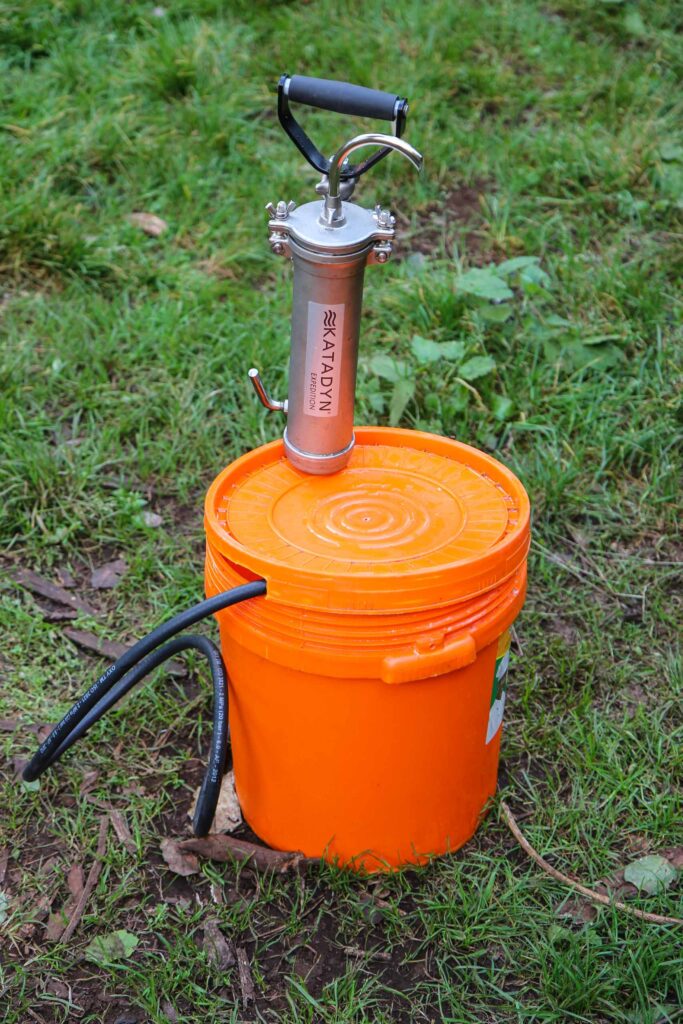
Learn More
Talk to an Expert
Our Africa Specialists know every detail about our Kilimanjaro trips. They will be happy to answer any questions and help make sure it’s the right adventure for you. Contact us to learn more or book your trip today!

